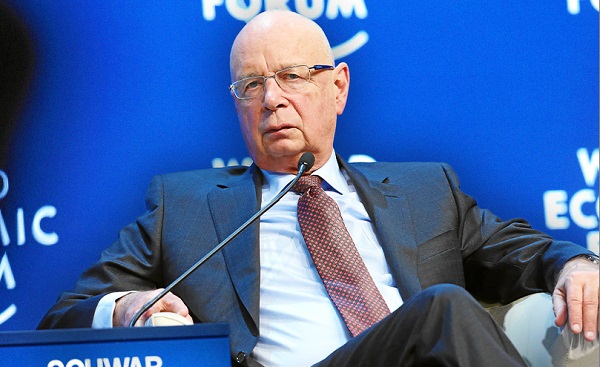Business
Myth-busting will help accelerate ESG retreat

From the Fraser Institute
By Matthew Lau
In recent years the ESG movement, which holds that corporate managers and investors should consider environmental, social and governance issues to benefit various “stakeholders”—in contrast to the more conventional view that the responsibility of business is to increase its profits for the benefit of its shareholders—has gathered force. Despite considerable evidence of ESG retrenching, it remains in wide currency. However, many points made in its favour are not supported by evidence. It’s important to separate myths from reality.
The Fraser Institute’s ESG essay series is a good resource. In one essay, Steven Globerman reviews the research on ESG scores and investor returns and finds that the claim made by many ESG promoters—that companies with higher ESG scores produce higher investor returns—lacks supporting evidence.
In another essay, 2013 Economics Nobelist Eugene F. Fama notes that competitive market forces better address corporate governance issues than externally imposed top-down structures. Many environmental and social problems too are better handled by bottom-up market forces than top-down initiatives, particularly from government.
Additional essays refute other ESG fallacies including that the ESG movement is the result of widespread demand from individual investors, consumers and workers (in fact, it’s primarily a top-down initiative of elites including government); that regulation-imposed ESG mandates improve corporate governance (they actually make it worse); and that business profit-maximization is harmful to stakeholders other than shareholders (in reality, businesses focusing on profits is generally good for their consumers, employees and suppliers). The entire series is worth reading.
Also worth reading is an article in the Financial Analysts Journal by Alex Edmans, a professor of finance at London Business School, which identifies and refutes 10 common ESG myths including the myth that a focus on shareholder value is harmful because maximizing shareholder value promotes an inefficient focus by management on short-term profit maximization. As Edmans explains, “Finance 101 teaches us that shareholder value is an inherently long-term concept. It is the present value of all future cash flows, from now until the end of time.”
To the extent that financial markets are efficient, expected future profits and losses are reflected in company share prices today, so even if corporate managers care only about today’s stock price, they will still try to maximize long-term value.
Edmans also takes aim at the claim that ESG stocks earn higher returns, again appealing to Finance 10. If ESG actually enhances a company’s shareholder value and this is known, it will be reflected in today’s stock price, so investors who buy the stock shouldn’t expect superior returns. “Feel-good” stocks should actually be expected to generate lower returns because if investors like holding certain stocks for non-financial reasons and dislike holding others, they’ll demand higher returns on the disfavoured stocks than the feel-good ones.
Various other myths include that “more ESG is always better” (in fact, ESG “exhibits diminishing returns and trade-offs exist,” Edmans writes) and that people improve ESG performance by paying for it (if people pay for improvements in some areas, it will cause companies to underweight other ESG dimensions). The final myth often promoted by ESG advocates and refuted in Edmans’s article is that regulation is justified because the market is imperfect. The blindingly obvious counterpoint—government is also imperfect.
ESG may be popular, but careful reading on the topic reveals that many points made in its favour are not supported by evidence. That may be one reason the ESG tide, at least in some places, is retreating.
Author:
2025 Federal Election
Next federal government should end corporate welfare for forced EV transition

From the Fraser Institute
By Tegan Hill and Jake Fuss
Corporate welfare simply shifts jobs and investment away from other firms and industries—which are more productive, as they don’t require government funding to be economically viable—to the governments’ preferred industries and firms, circumventing the preferences of consumers and investors. And since politicians spend other people’s money, they have little incentive to be careful investors.
General Motors recently announced the temporary closure of its electric vehicle (EV) manufacturing plant in Ontario, laying off 500 people because its new EV isn’t selling. The plant will shut down for six months despite hundreds of millions in government subsides financed by taxpayers. This is just one more example of corporate welfare—when governments subsidize favoured industries and companies—and it’s time for the provinces and the next federal government to eliminate it.
Between the federal government and Ontario government, GM received about $500 million to help fund its EV transition. But this is just one example of corporate welfare in the auto sector. Stellantis and Volkswagen will receive about $28 billion in government subsidies while Honda is promised $5 billion.
More broadly, from 2007 to 2019, the last pre-COVID year of data, the federal government spent an estimated $84.6 billion (adjusted for inflation) on corporate welfare while provincial and local governments spent another $302.9 billion. And crucially, these numbers exclude other forms of government support such as loan guarantees, direct investments and regulatory privileges, so the actual cost of corporate welfare during this period was much higher.
Of course, politicians claim that corporate welfare benefits workers. Yet according to a significant body of research, corporate welfare fails to generate widespread economic benefit. Think of it this way—if the businesses that received subsidies were viable to begin with, they wouldn’t need government support. So unprofitable companies are kept in business through governments’ support, which can prevent resources, including investment and workers, from moving to profitable companies, hurting overall economic growth.
Put differently, rather than fuelling economic growth, corporate welfare simply shifts jobs and investment away from other firms and industries—which are more productive, as they don’t require government funding to be economically viable—to the governments’ preferred industries and firms, circumventing the preferences of consumers and investors. And since politicians spend other people’s money, they have little incentive to be careful investors.
Governments also must impose higher tax rates on everyone else to pay for corporate welfare. In turn, higher tax rates discourage entrepreneurship and business investment—again, which fuels economic growth. And the higher the tax rates, the more economic activity they discourage.
GM’s EV plant shut down once again proves that when governments try to engineer the economy with corporate welfare, workers will ultimately lose. It’s time for the provinces and the next federal government—whoever it may be—to finally put an end to this costly and ineffective policy approach.
Business
Hudson’s Bay Bid Raises Red Flags Over Foreign Influence

From the Frontier Centre for Public Policy
A billionaire’s retail ambition might also serve Beijing’s global influence strategy. Canada must look beyond the storefront
When B.C. billionaire Weihong Liu publicly declared interest in acquiring Hudson’s Bay stores, it wasn’t just a retail story—it was a signal flare in an era where foreign investment increasingly doubles as geopolitical strategy.
The Hudson’s Bay Company, founded in 1670, remains an enduring symbol of Canadian heritage. While its commercial relevance has waned in recent years, its brand is deeply etched into the national identity. That’s precisely why any potential acquisition, particularly by an investor with strong ties to the People’s Republic of China (PRC), deserves thoughtful, measured scrutiny.
Liu, a prominent figure in Vancouver’s Chinese-Canadian business community, announced her interest in acquiring several Hudson’s Bay stores on Chinese social media platform Xiaohongshu (RedNote), expressing a desire to “make the Bay great again.” Though revitalizing a Canadian retail icon may seem commendable, the timing and context of this bid suggest a broader strategic positioning—one that aligns with the People’s Republic of China’s increasingly nuanced approach to economic diplomacy, especially in countries like Canada that sit at the crossroads of American and Chinese spheres of influence.
This fits a familiar pattern. In recent years, we’ve seen examples of Chinese corporate involvement in Canadian cultural and commercial institutions, such as Huawei’s past sponsorship of Hockey Night in Canada. Even as national security concerns were raised by allies and intelligence agencies, Huawei’s logo remained a visible presence during one of the country’s most cherished broadcasts. These engagements, though often framed as commercially justified, serve another purpose: to normalize Chinese brand and state-linked presence within the fabric of Canadian identity and daily life.
What we may be witnessing is part of a broader PRC strategy to deepen economic and cultural ties with Canada at a time when U.S.-China relations remain strained. As American tariffs on Canadian goods—particularly in aluminum, lumber and dairy—have tested cross-border loyalties, Beijing has positioned itself as an alternative economic partner. Investments into cultural and heritage-linked assets like Hudson’s Bay could be seen as a symbolic extension of this effort to draw Canada further into its orbit of influence, subtly decoupling the country from the gravitational pull of its traditional allies.
From my perspective, as a professional with experience in threat finance, economic subversion and political leveraging, this does not necessarily imply nefarious intent in each case. However, it does demand a conscious awareness of how soft power is exercised through commercial influence, particularly by state-aligned actors. As I continue my research in international business law, I see how investment vehicles, trade deals and brand acquisitions can function as instruments of foreign policy—tools for shaping narratives, building alliances and shifting influence over time.
Canada must neither overreact nor overlook these developments. Open markets and cultural exchange are vital to our prosperity and pluralism. But so too is the responsibility to preserve our sovereignty—not only in the physical sense, but in the cultural and institutional dimensions that shape our national identity.
Strategic investment review processes, cultural asset protections and greater transparency around foreign corporate ownership can help strike this balance. We should be cautious not to allow historically Canadian institutions to become conduits, however unintentionally, for geopolitical leverage.
In a world where power is increasingly exercised through influence rather than force, safeguarding our heritage means understanding who is buying—and why.
Scott McGregor is the managing partner and CEO of Close Hold Intelligence Consulting.
-

 2025 Federal Election1 day ago
2025 Federal Election1 day agoOttawa Confirms China interfering with 2025 federal election: Beijing Seeks to Block Joe Tay’s Election
-

 2025 Federal Election1 day ago
2025 Federal Election1 day agoHow Canada’s Mainstream Media Lost the Public Trust
-

 2025 Federal Election23 hours ago
2025 Federal Election23 hours agoBREAKING: THE FEDERAL BRIEF THAT SHOULD SINK CARNEY
-

 2025 Federal Election1 day ago
2025 Federal Election1 day agoReal Homes vs. Modular Shoeboxes: The Housing Battle Between Poilievre and Carney
-

 2025 Federal Election24 hours ago
2025 Federal Election24 hours agoCHINESE ELECTION THREAT WARNING: Conservative Candidate Joe Tay Paused Public Campaign
-

 COVID-191 day ago
COVID-191 day agoNearly Half of “COVID-19 Deaths” Were Not Due to COVID-19 – Scientific Reports Journal
-

 John Stossel1 day ago
John Stossel1 day agoClimate Change Myths Part 2: Wildfires, Drought, Rising Sea Level, and Coral Reefs
-

 Business21 hours ago
Business21 hours ago‘Great Reset’ champion Klaus Schwab resigns from WEF







